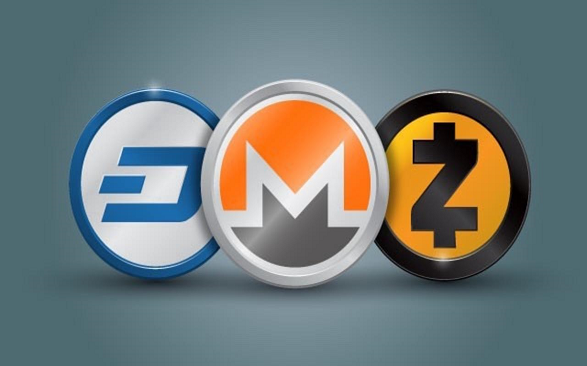What is blockchain technology? Blockchain technology has been a buzzword on the internet for many years now. Its inception marked a revolution that has completely transformed the way we think about data and trust. Blockchain technology has the potential to change the way businesses operate, the way we interact with the internet, and the way we trust each other. From the cryptocurrency industry and supply-chain management to digital identity management, and voting systems, blockchain technology finds use in a variety of industries and sectors.
Are you curious about how blockchain technology works and its various use cases in today’s society? Do you want to know how blockchain technology is revolutionizing data storage and security? Then stick to the end as this article reviews blockchain technology, the different types of blockchains, their use cases, benefits, challenges, and limitations.
Buckle up and join us on this journey to understand and discover the world of blockchain technology!
What is blockchain technology?
Blockchain technology is a secure way for multiple parties to share and update information. It is like a digital notebook of transactions that is kept up to date by a network of computers. Everyone who participates has a copy of the notebook and can confirm that it’s accurate. This means that no one person or organization controls it, and it’s an accessible and transparent system for everyone.
Blockchain technology started with an idea in the 1990s. People wanted to make a database that could be used by many people at the same time. But the systems then were not advanced enough to make this a reality.
In 2008, a person or group of persons named Satoshi Nakamoto wrote a document (whitepaper) about a new electronic cash system called Bitcoin. Bitcoin is established on blockchain technology. Bitcoin transactions are secure and transparent, relying on a peer-to-peer (P2P) network without the need for any intermediary. Apart from the Bitcoin network and protocol, Bitcoin as an electronic cash system built on blockchain technology also comprises bitcoin, the cryptocurrency or electronic cash, with the ticker BTC. The first BTC transaction was made in 2009, and it was the start of something big. At first, not many people knew about BTC, but soon it became more popular.
Read also: Why is bitcoin commonly confused with blockchain?
Today, people use blockchain technology for many things, including digital identity management, real-estate tokenization, payments, play–to–earn (P2E) gaming, supply-chain management, voting, as well as keeping track of data, etc.
How does blockchain technology work?
A blockchain, as the name suggests, is made of blocks. Notably, each block on the blockchain contains a set of transactions (called blocks), along with a unique identifier called a hash. The hash is a cryptographic function that is used to ensure the integrity of the block. Once a block is added to the blockchain, it cannot be altered or deleted. This makes the ledger is immutable.
When a new transaction is initiated on the blockchain, it is verified by a network of nodes. These nodes work together to ensure that the transaction is valid and that the parties involved have the necessary funds or resources to complete the transaction. Once the transaction is verified, it is added to a new block, which is then added to the blockchain.
The verification process is done using complex mathematical computations. This requires high energy or computing power. The process is known as mining, and it is incentivized by a reward system. Miners who successfully verify a block of transactions are rewarded with cryptocurrency. Cryptocurrency can be used as a form of payment or traded on cryptocurrency exchanges. This mining-based verification process and reward system is used by Bitcoin. It is also used by some other blockchains that use what is called proof of work (PoW) consensus system. An example is Ethereum which is currently transiting to proof of stake (PoW) which does not require high energy and computational power.
Read also: The Ethereum Merge: What the Crypto Asset Buyer Should Know
Benefits of Blockchain
Here are some key benefits blockchain technology brings to the present society.
Transparency
One of the most notable advantages of blockchain technology is its transparency. Blockchain is a distributed ledger that records transactions. Each transaction is time-stamped and verified by the network. This makes it almost impossible to modify or delete data. This feature makes blockchain technology an ideal solution for industries such as finance and supply-chain management, which greatly rely on trust and accountability.
Privacy and Security
Advanced privacy and security of data is another crucial benefit associated with blockchain technology. Blockchain employs advanced cryptographic techniques to insure data, making it resistant to hack or alteration. Additionally, the decentralized nature of the technology makes it impervious to single points of failure, rendering it more secure than traditional centralized systems.
Efficiency
Blockchain technology can also significantly enhance efficiency in several industries. By eliminating intermediaries and automating processes, the technology can significantly reduce transaction costs, processing times, and errors. Industries such as banking, where transaction costs can be high and delays can be costly, can greatly benefit from blockchain technology.
Challenges of Blockchain
Below are the major challenges of blockchain:
Slow Performance
Compared to traditional databases, blockchain is considerably slow. This is due to the operations blockchain protocols have to run in order to ensure security and transparency on the system. From signature verification using cryptography to decision-making on the network using consensus mechanisms, blockchain transactions require more time. Decentralization, where each node must verify and store every transaction, is expensive. This affects scalability.
Implementation Cost
Again, compared to traditional databases, blockchain is costly. Blockchain solution involves deploying protocol, a network, and in some cases a coin or token system. Besides, integrating blockchain into an existing process in an organization can be herculean.
Irreversibility
Blockchain transactions are programmed to be immutable or irreversible. This is because data modification is typically not permitted. Where data must be modified due to errors or mistakes, the codes in all of the blocks must be re-written. This will be time-consuming and costly. On some blockchains, including Bitcoin, it is near impossible due to the huge resources this would require.
Types of Blockchain
Blockchains are of different types and many have emerged in the industry today. Each blockchain type has distinct features and use cases. Below are the four main types of blockchains we have:
- Public Blockchains: Public blockchains are open-source and permissionless. This blockchain type allows anyone to participate in the core activities of the network. Anyone can be a miner on the network and earn rewards for doing so. Bitcoin is the most famous public blockchain, with a market capitalization of $474 billion at the time of writing. It was designed to facilitate peer-to-peer transactions without the need for intermediaries.
- Private Blockchains: They are a direct opposite of public blockchains. Private blockchains are permissioned. Only authorized participants can access the network. That is, a private blockchain allows only selected and verified participants to engage in the core activities of the network. More so, only the blockchain operator has the liberty to edit or delete entries on the blockchain.
This blockchain type is ideal for organizations that require greater control over the data and network. Hyperledger Fabric is an example of a private blockchain that many companies use for supply-chain management.
- Consortium Blockchains: Consortium blockchains are a combination of public and private blockchains. They are permissioned, but a group of organizations operates the nodes. This type of blockchain is ideal for industries that require collaboration among multiple organizations, such as finance or healthcare. R3 Corda is an example of a consortium blockchain that banks use for trade finance and supply-chain management.
Blockchain Technology Use Cases
Although blockchain is mostly being used in the cryptocurrency industry currently, the technology has many use cases. Blockchain technology has the potential to revolutionize several industries and sectors in the economy. Some use cases of blockchain include the following:
- Supply Chain Management: Due to its ability to improve transparency, traceability, and accountability, blockchain technology is ideal for supply-chain management. Walmart uses blockchain technology to track food from farm to shelf, which helps to ensure food safety and improves supply chain efficiency. Amongst other blockchains, the Vechain blockchain is mostly adopted by luxury brands and countries for supply-chain management purposes.
- Cross-Border Payments: Traditional cross-border payments are slow, expensive, and unreliable. But blockchain technology can be used to improve cross-border payments. Ripple, for example, employs blockchain technology to facilitate real-time cross-border payments that are fast, secure, and low-cost. Stablecoins, for example Circle’s USDC, Tether’s USDT, and Binance-branded BUSD, rely on blockchain technology for cheaper and faster payments.
- Smart Contracts: Smart contracts are self-executing contracts that are programmed to execute automatically when specific conditions are met. Smart contracts enable the creation of new projects on an existing one. Blockchain technology enables this. Ethereum is a blockchain platform that enables the creation of smart contracts, which can be used for a broad range of applications. The Cardano blockchain founded by Charles Hoskinson is another popular smart contract-enabled blockchain platform.
These are just a few examples of how blockchain technology is being used, and more use cases are expected to emerge in the future as the technology evolves.
Related: What are the top 5 blockchain projects you should know?
Conclusion
Blockchain technology is a relatively new and exciting invention that cannot be ignored. Here, we talked about what it is, how it works, and what it can do. We also looked at the good things about blockchain technology. Nonetheless, it should be noted that blockchain is not a perfect technology as it has a few demerits too.
There is a lot of buzz about what blockchain can do. But blockchain is not a solution for everything under the sun. It is vital that organizations comprehensively analyze if blockchain offers the solutions they want. This is because blockchain can be a round peg in a square hole, resulting in a waste of time, money, and other resources.
But blockchain technology is creating a better world today. Presently, it is already changing many businesses and sectors. Blockchain technology is expected to impact more industries as the novel idea continues to develop.
Credit: Ndianabasi Tom
A crypto journalist and content writer who has been talking about cryptocurrency and blockchain technology since 2018, Ndianabasi is a Writer at Crypto Asset Buyer (CAB).
Discover more from Crypto Asset Buyer
Subscribe to get the latest posts sent to your email.




